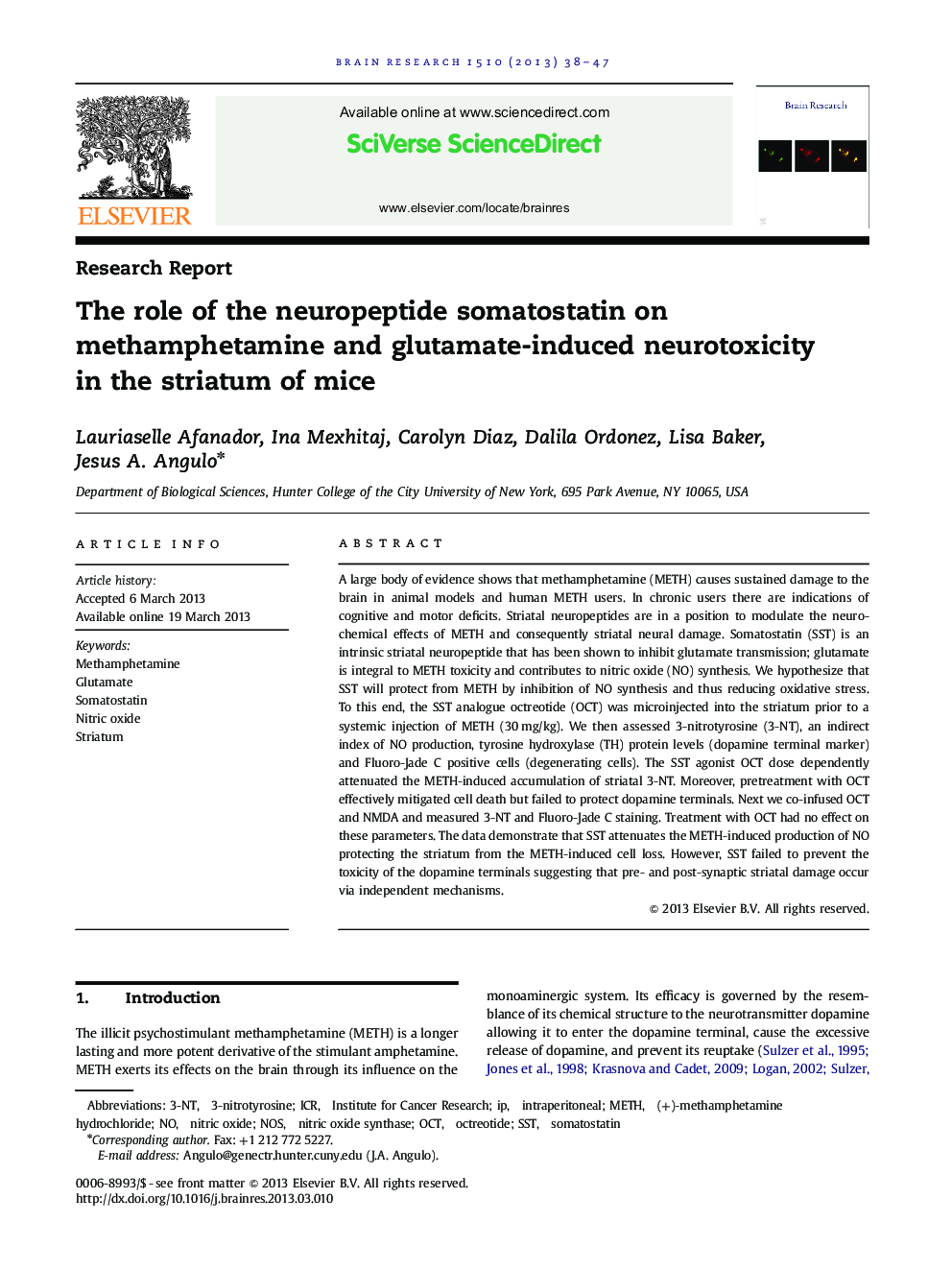| کد مقاله | کد نشریه | سال انتشار | مقاله انگلیسی | نسخه تمام متن |
|---|---|---|---|---|
| 6263896 | 1613929 | 2013 | 10 صفحه PDF | دانلود رایگان |
- We investigated somatostatin and methamphetamine-induced striatal nitric oxide.
- Somatostatin inhibited methamphetamine-induced production of nitric oxide.
- Somatostatin protected from the methamphetamine-induced apoptosis.
- Somatostatin failed to affect glutamate-induced nitric oxide and apoptosis.
A large body of evidence shows that methamphetamine (METH) causes sustained damage to the brain in animal models and human METH users. In chronic users there are indications of cognitive and motor deficits. Striatal neuropeptides are in a position to modulate the neurochemical effects of METH and consequently striatal neural damage. Somatostatin (SST) is an intrinsic striatal neuropeptide that has been shown to inhibit glutamate transmission; glutamate is integral to METH toxicity and contributes to nitric oxide (NO) synthesis. We hypothesize that SST will protect from METH by inhibition of NO synthesis and thus reducing oxidative stress. To this end, the SST analogue octreotide (OCT) was microinjected into the striatum prior to a systemic injection of METH (30Â mg/kg). We then assessed 3-nitrotyrosine (3-NT), an indirect index of NO production, tyrosine hydroxylase (TH) protein levels (dopamine terminal marker) and Fluoro-Jade C positive cells (degenerating cells). The SST agonist OCT dose dependently attenuated the METH-induced accumulation of striatal 3-NT. Moreover, pretreatment with OCT effectively mitigated cell death but failed to protect dopamine terminals. Next we co-infused OCT and NMDA and measured 3-NT and Fluoro-Jade C staining. Treatment with OCT had no effect on these parameters. The data demonstrate that SST attenuates the METH-induced production of NO protecting the striatum from the METH-induced cell loss. However, SST failed to prevent the toxicity of the dopamine terminals suggesting that pre- and post-synaptic striatal damage occur via independent mechanisms.
Journal: Brain Research - Volume 1510, 13 May 2013, Pages 38-47
